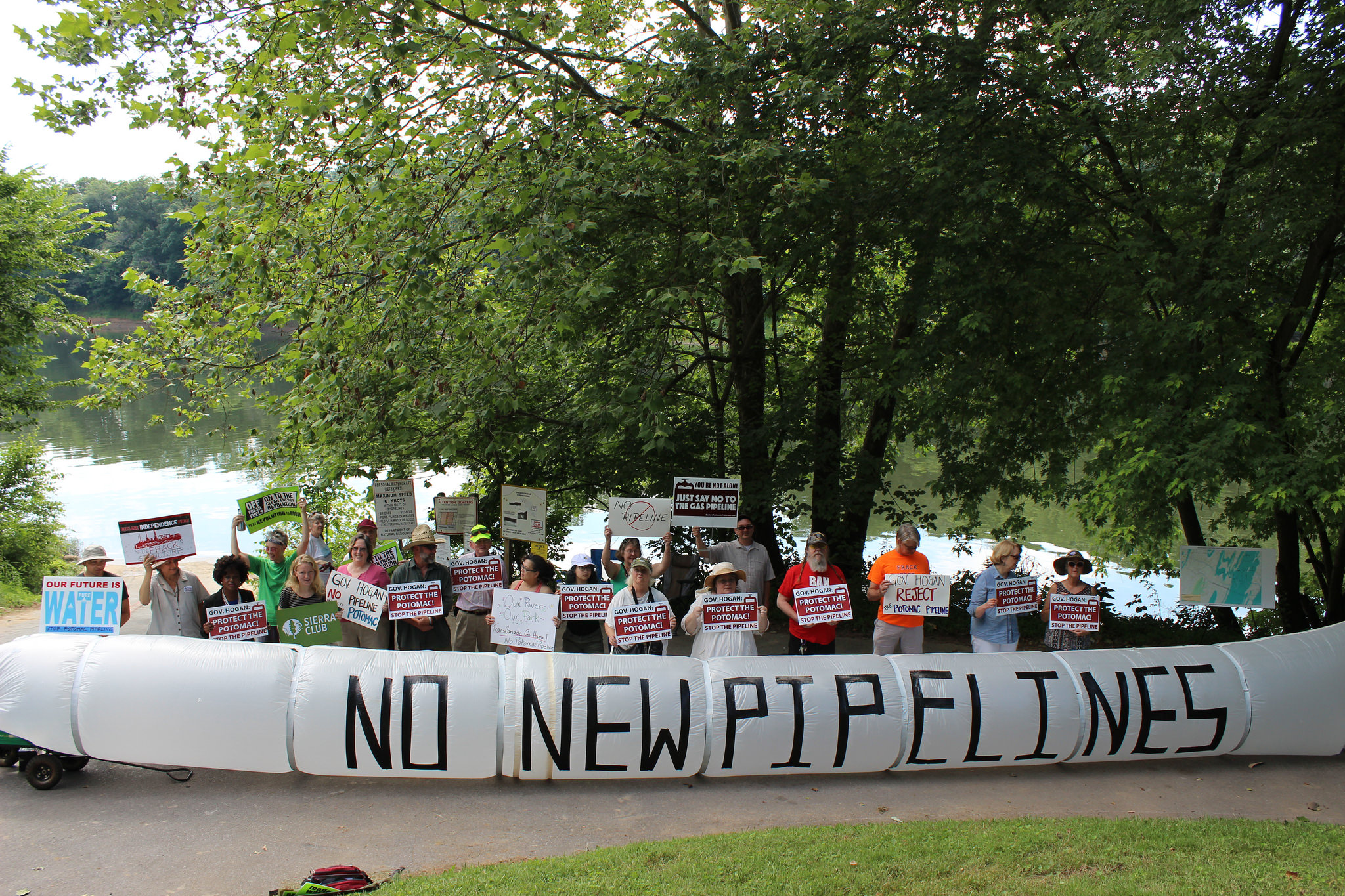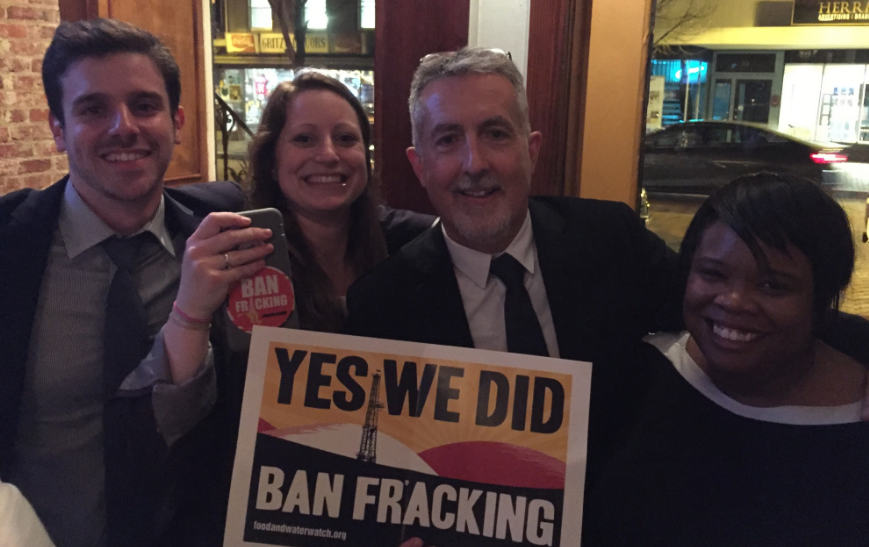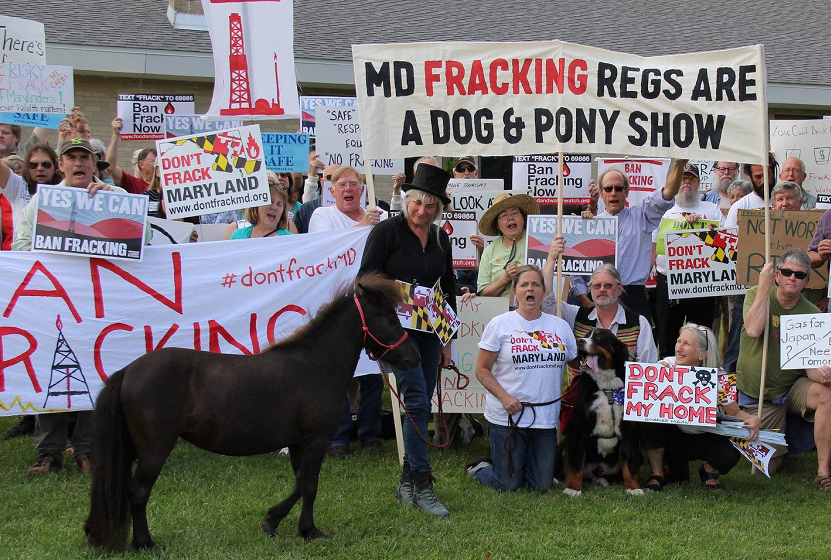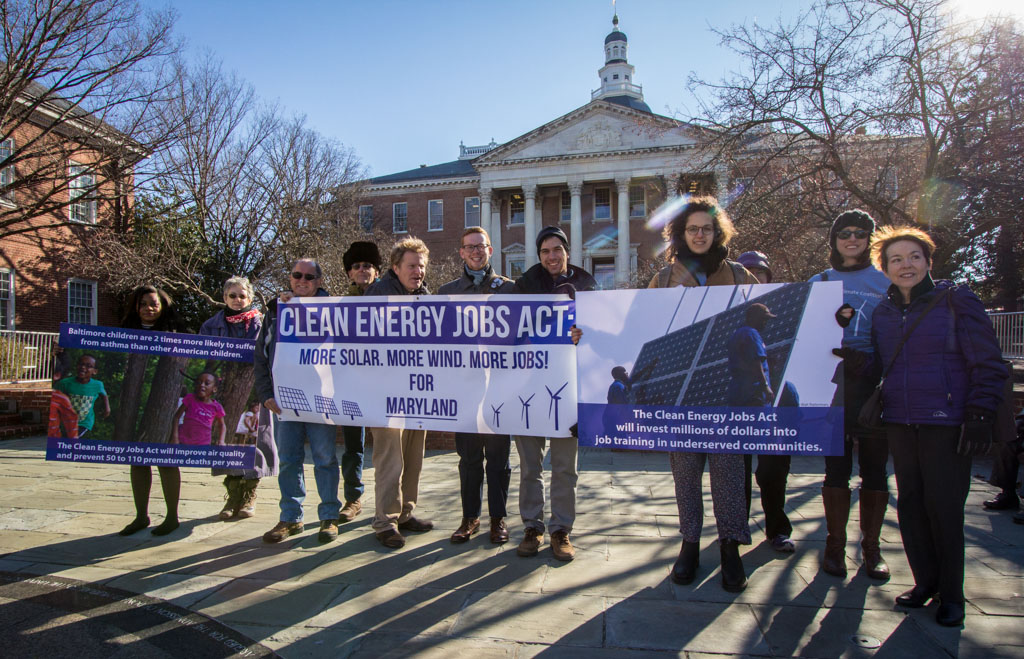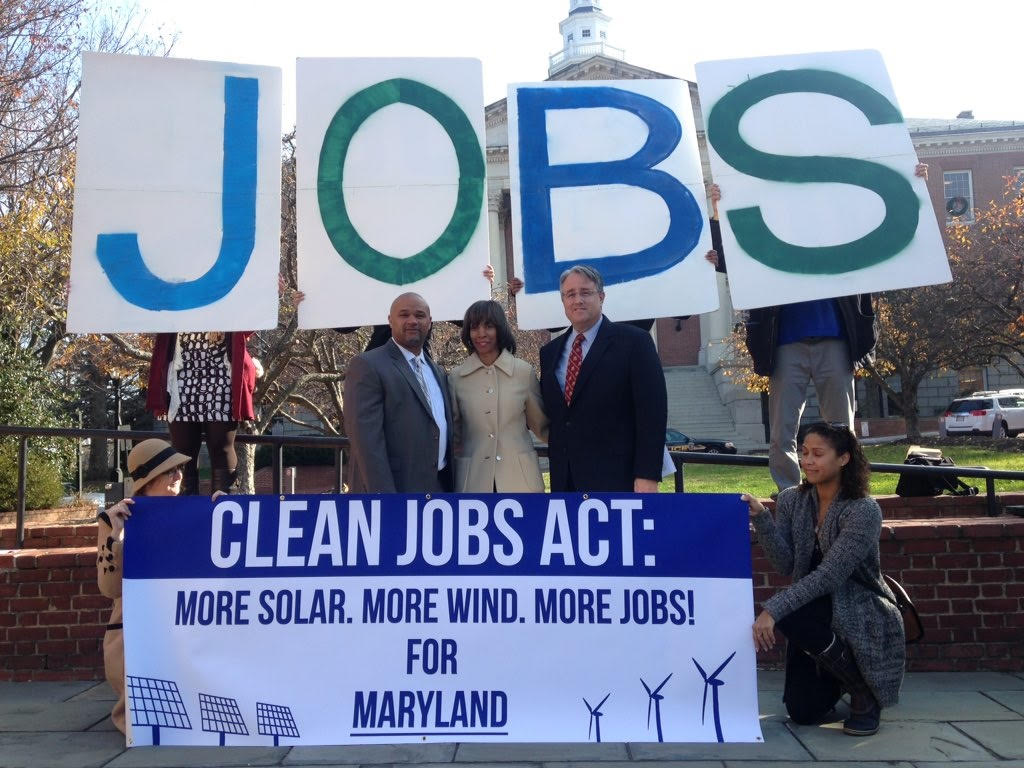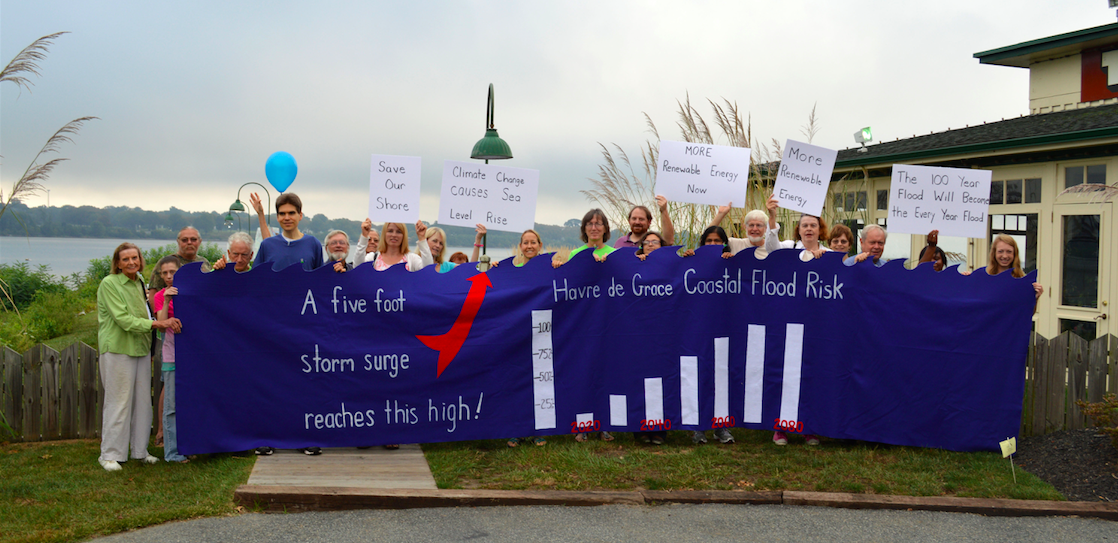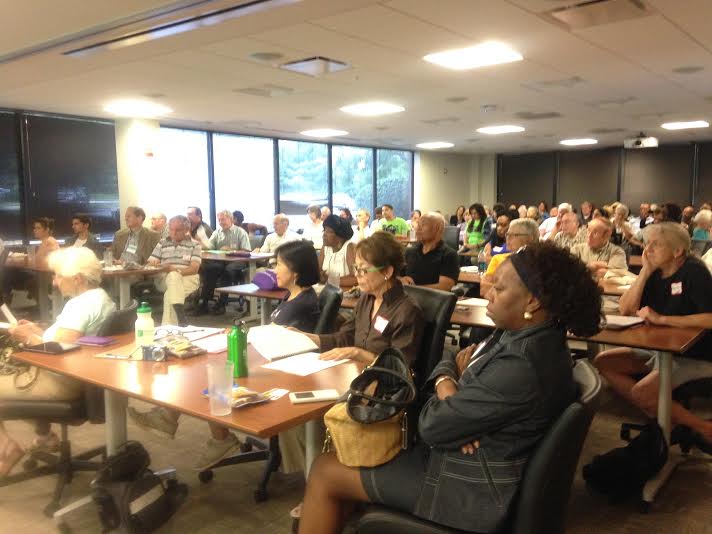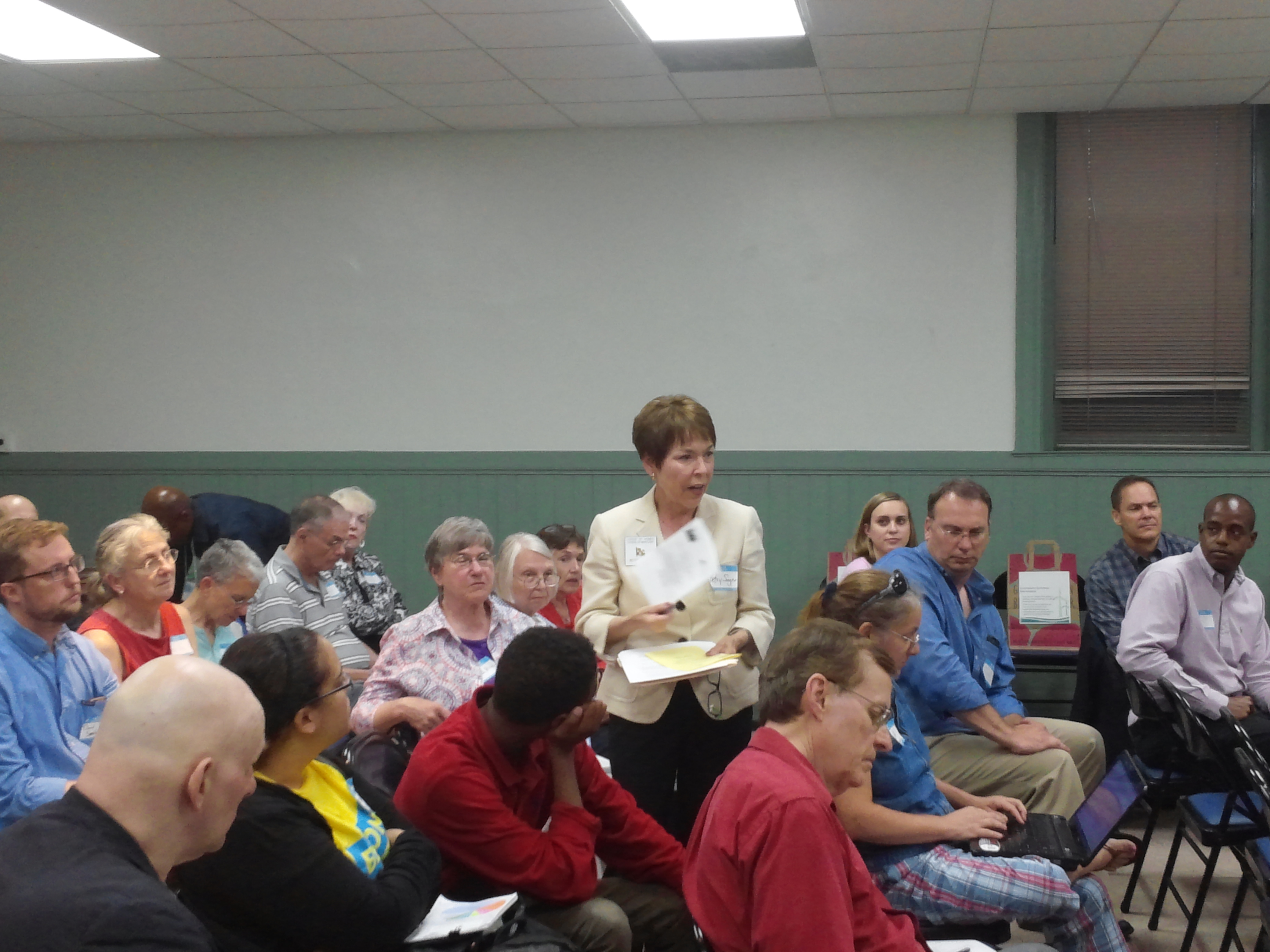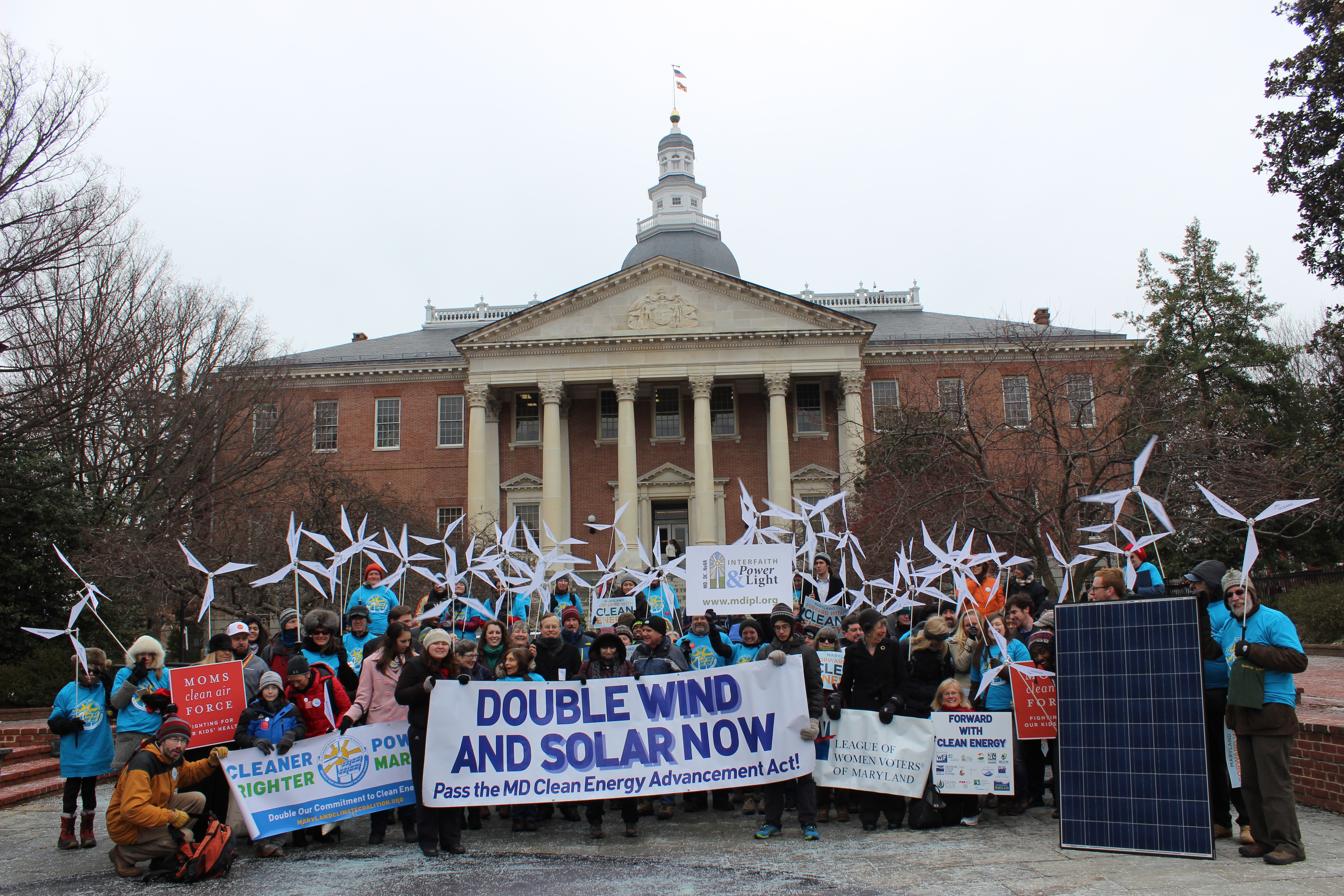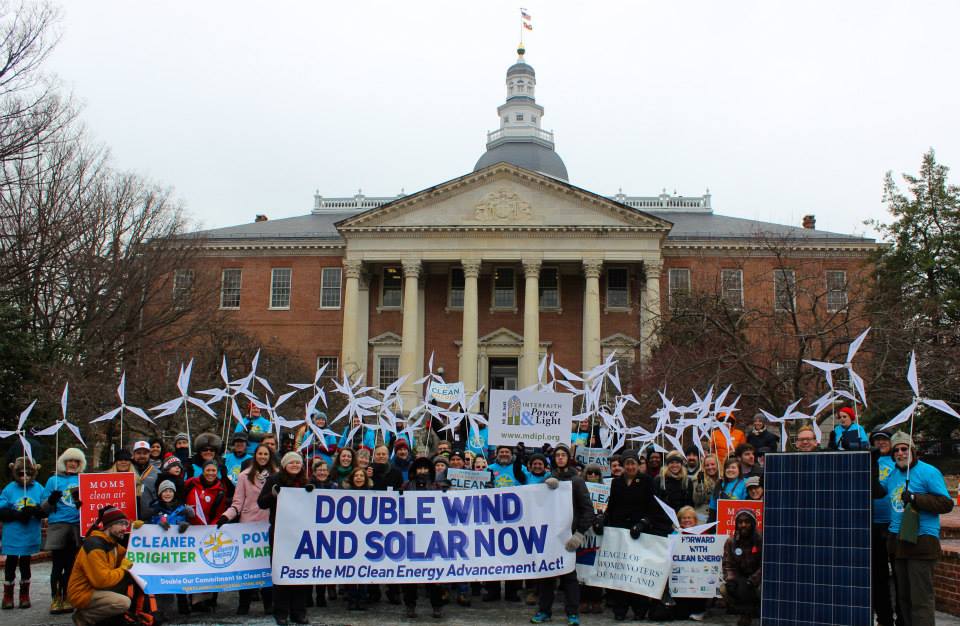From Standing Rock to Hancock, Maryland, citizens are rising up to resist fracked-gas pipelines in their communities. That’s right: Western Maryland is now under threat from a Dakota-esque pipeline. It’s being proposed by the infamous energy giant TransCanada of Keystone XL fame.
TransCanada — the same company that recently spilled over 16 thousand gallons of crude oil on South Dakota farmland — now wants to build a pipeline that would transport fracked gas between Pennsylvania and West Virginia.They want to do this with the shortest, cheapest, and most dangerous route possible. The Eastern Panhandle Pipeline expansion project would cut through Hancock, Maryland and underneath the Potomac River that serves as the source of drinking water for millions of residents in our state and the DC suburbs.
We are not going to allow this to happen.
This summer, we are forming a resistance to stop the Pipeline under the Potomac. We will do this by staging camp outs along the C&O Canal throughout the summer to draw attention to the many groups, concerned citizens, and elected officials who are opposed to endangering the drinking water of millions for a pipeline that wouldn’t even benefit Maryland citizens. We’ll be calling on Governor Hogan to deny the permit that would allow TransCanada to drill under the Potomac in Maryland.
We were able to ban fracking in Maryland because each one of you dedicated your time, your energy, and your activism to protect Maryland from fracking. Now it’s time once again to roll up our sleeves and call on Governor Hogan to complete the fracking ban — which means stopping this pipeline!
Sign up to camp out today for a frack-free future tomorrow.
Here are the details:
Weekend 1
Date: Friday/Saturday, June 30-July 1
Location: McCoy’s Ferry Campground
Start Time: 12:00 pm
Sponsoring Organization: Potomac Riverkeepers
Organizational Contact: Brent Walls, Brent@potomacriverkeeper.org
Weekend 2
Date: Saturday, July 8th
Location: McCoy’s Ferry Campground
Start Time: 1:00 p.m.
Sponsoring Organization: Food and Water Watch
Organizational Contact: Rianna Eckel, reckel@fwwatch.org
Weekend 3
Date: Friday, July 14th
Location: Paw Paw Campground
Start Time: 2:00 pm
Details: Join for a splashing good time in the Potomac River at the Paw Paw Campground along the C&O canal. Bring your family and friends to a great swimming hole on the Potomac and enjoy some hot dogs and hamburgers. Stay the night at the campgrounds and hear more about our fight against the pipeline under the Potomac. The following morning there will be a guided talk of the Paw Paw Tunnel by the National Park Service. The goal is to have enough people at this event to stretch across the Potomac River from Maryland to West Virginia to show that we stand as a united front.
Sponsoring Organization: Potomac Riverkeepers
Organizational Contact: Brent Walls, Brent@potomacriverkeeper.org
Weekend 4
Date: Friday, July 21st
Location: C&O Canal Boat Launch (just past the 120 mile marker)
Time: 6:00 p.m.
Sponsoring Organization: Eastern Panhandle Protectors
Organizational Contact: Laura Steepleton, lnsteep@gmail.com
Weekend 5
Date: Friday, July 28th
Location: Antietam Creek Campsite
Start Time: 12:00 p.m.
Sponsoring Organization: Chesapeake Climate Action Network
Organizational Contact: Brooke Harper, brooke@chesapeakeclimate.org
Weekend 6
Date: Saturday, August 5th
Location: McCoys Ferry Campground
Start Time: 1:00 p.m.
Details: Activities will include our outings program: hiking, bike tours, etc. – Highlighting our Climate Parents program.
Sponsoring Organization: The Sierra Club Maryland Chapter
Organizational Contact: Zack Gerdes, Zack.Gerdes@mdsierra.org
Click here to sign up for a campout weekend — or email the organizers (listed above) directly!
Maryland just passed a fracking ban. I'm weeping.
This is it: We have officially made history.
Last night, the Senate voted 35 to 10 to ban fracking statewide in Maryland. The bill will be sent to Governor Hogan’s desk to be signed in a matter of days. We are now the third state to ban fracking and the first state with gas reserves to pass a legislative ban. This is the most environmentally significant bill that Maryland has ever passed. Period.
As I write this, I can barely see the computer screen as my eyes keep welling up with tears. This has been the most personal, grueling, and gratifying campaign that I have ever worked on.
As a Western Marylander, the stakes on this campaign were enormous. If we failed, we would have opened up my family’s land and community to the dangers of fracking — contaminating our water, risking birth defects in our children, and scarring the natural beauty of Western Maryland.
Today, we proved that grassroots power can overcome partisan politics and Big Oil and Gas if we organize and work together for a common purpose.
Today, we proved that together, we can overcome anything.
When I first began this campaign, I learned about my grandfather’s activism in Western Maryland. He led sit-ins to bring racial integration to local restaurants and community pools in Frostburg. He did this to protect his seven sons and one daughter so that they could live a life that was just and free of harm. When I began organizing in Frostburg, I carried his spirit with me.
And today, I can proudly say I carried on his legacy of protecting his family. But we could not have done it without each of you. You gave your time, your efforts, and your passion to secure a better future for my family and for all of Maryland. From the start, each of you worked to build a movement that secured this victory.
Thank you to the residents of Frostburg, where over 800 of you signed petitions and hundreds of you rallied and urged your city council to ban fracking.
Thank you to the citizens of Bel Air, who rallied in the freezing cold and told your city council all you wanted for the holidays was for them to ban fracking.
Thank you to Frederick County activists, who met with your local officials and did not relent until they supported a statewide ban.
Thanks to each of you in Friendsville and across Western Maryland, who were met with harsh criticisms and shouted down by your legislators for standing strong to keep your communities safe from fracking.
Thank you to the countless local officials who stood up against fracking in Anne Arundel County, Baltimore City, Baltimore County, Charles County, College Park, Friendsville, Frederick County, Frostburg, Greenbelt, Mountain Lake Park, Montgomery County, and Prince George’s County.
Thanks to each of you who called, wrote your legislators, lobbied in Annapolis and were part of the rally where over a thousand people took to the streets in Annapolis to demand an unfractured future for generations to come.
Thank you to the “Annapolis 13” who were peacefully arrested and helped carry the message to our state Senate that we would not compromise on a ban.
And thanks to each of you who had unwavering faith that sometimes David can beat Goliath. You pushed forward the notion that grassroots organizing can truly change the world.
Because it has.
Please take a moment to thank each and every one of our legislators who cast a “yes” vote after YOU made your voices heard.
Thank them for representing our voices in Annapolis and making sure we have a frack-free future.
Gaining Ground to Ban Fracking in Maryland

The summer of 2016 has set the groundwork for a frack-free future in Maryland. Hundreds of you drove to meetings to tell the Hogan Administration: we don’t want flawed regulations — we want a permanent ban on fracking. Dozens of you have petitioned at farmer’s markets, gone door-to-door, opened up your congregations to educate your communities on fracking, and so much more. From Western Marylanders bringing a literal “dog and pony show” (pictured above) to the Hogan administration’s public meeting in Oakland to 88 local residents in Rockville showing up to watch the fracking documentary Groundswell Rising — our movement is growing and we are determined to ensure Maryland’s future is built on clean energy, not fracking.
All of our organizing this summer is aimed at building an unstoppable groundswell of public support for passing a permanent, statewide ban on fracking in the 2017 Maryland General Assembly session — the final legislative session before our hard-won, two-year moratorium on fracking will expire.
The stakes were raised this summer. On June 22nd, Hogan administration officials released draft proposals for regulating fracking, the same day as the Maryland Department of the Environment’s first scheduled public meeting to discuss those draft rules in Cumberland. Residents in Western Maryland who are on the front lines of potential fracking had just a few hours to pore over dozens of pages of technical documents that could impact their water, their livelihood and the health of their communities.
During a series of three public meetings, Maryland legislators and concerned citizens made it clear — a permanent, statewide ban on fracking is the only rational option for Maryland. The Hogan’s administration’s proposals would roll back air and water monitoring requirements, slash safety precautions, and ultimately welcome fracking to Maryland starting in October 2017.
We didn’t take these rollbacks on our health, safety and well-being lying down.
In Baltimore, State Senator Bobby Zirkin told Hogan administration officials, “I am afraid you have it wrong on this one” and at an outdoor rally pledged to a crowd of over 100 people that he will introduce legislation to ban fracking in the upcoming legislative session.
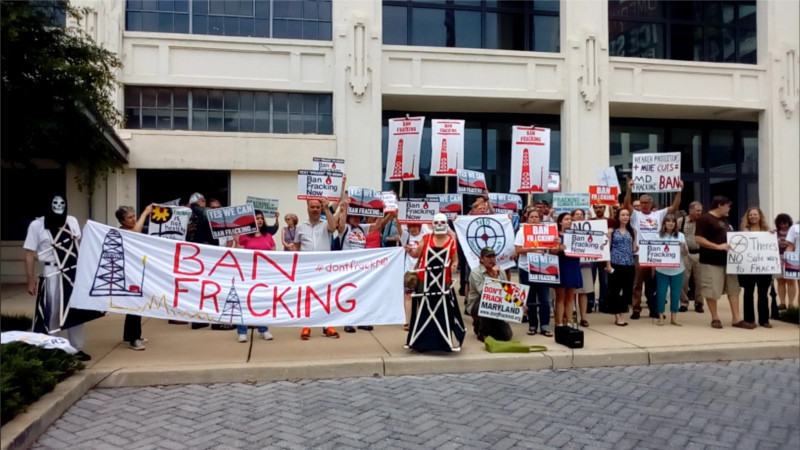
Hours and hours of testimony were put forth in Baltimore City with over 70 people telling the Hogan administration to BAN FRACKING NOW. At the final stop in McHenry, Western Marylanders brought a dog and a pony to the rally to show exactly what they thought about these new regulations.
Meanwhile, before and after the release of the draft regulations, activists across Maryland moved full-steam ahead to ask local elected officials to take action to ban fracking. The town of Friendsville in Garrett County banned fracking. The town council in Greenbelt wrote a letter to their state delegation asking for a permanent ban on fracking. In Charles County, the county council adapted their comprehensive plan to restrict fracking and will be introducing a “no fracking” zoning ordinance this fall. County leaders in Prince George’s and Montgomery County, which have already banned fracking in their counties, are encouraging other legislators to take up the charge. Prince George’s County Councilwoman Mary Lehman, sponsor of her county’s fracking ban, convened a meeting of local advocacy groups and legislators at the annual gathering of the Maryland Association of Counties to strategize on how we can ban fracking across our state.
Dozens of activists are working on the ground to pass ban ordinances and resolutions in their own towns, building a strong grassroots movement for a frack-free future.
Here’s how you can join our movement today and act locally in your own community to keep Maryland frack-free:
- Get your city to endorse a ban on fracking: Download the CCAN fracking activist toolkit for a step-by-step guide.
- Sign the petition: Add your name to the call for a permanent ban on fracking in Maryland!
The Road to Clean Energy Victories in Maryland

My second week at CCAN I stood knee deep in the Baltimore Harbor in a dress and waders cleaning up debris that the tide had washed in. I knew at that moment that I had joined an organization that would do anything to bring clean energy to Maryland. That morning, Mike Tidwell, CCAN’s director, stood waist-deep in the Inner Harbor along with members of the Sierra Club, Working Families, the MD State Chapter of the NAACP, faith and student leaders to show why clean energy was desperately needed in Maryland.
As a broad, diverse coalition spoke behind a podium immersed in water — we began our journey to fight for a 40% clean energy standard in Maryland. The initiative was bold, innovative — yet not impossible. It would take all of us across Maryland working together for years to raise Maryland’s clean energy standard.
We are proud to announce that we have had a momentous year for climate change legislation in Maryland. Governor Hogan signed into law the Greenhouse Gas Reduction Act that will slash emissions by 40% by the year 2030. On Monday, April 11th, on the final day of the 2016 session, the Clean Energy Jobs Act passed the Maryland General Assembly. The Clean Energy Jobs Act raises Maryland’s clean electricity standard to 25% by 2020 and opens up new avenues of funding for minority, small and women-owned businesses in the renewable energy industry. The Clean Energy Jobs Act will ensure that Maryland keeps dirty fossil fuels in the ground while diversifying and expanding Maryland’s wind and solar industry.
For those of you that have worked alongside us for the past few years — you know that these victories did not come easily. It took all of us working together and exploring bold new ways to secure a clean energy future for Maryland.
On the opening day of session in 2015, over 200 activists stood out in the bitter, January cold, holding wind turbines and placards demanding a clean energy future for Maryland. Lawyer’s Mall was crowded with legislative champions Senators Feldman and Madaleno along with labor, civil rights, health and faith voices. Trisha Sheehan, of Mom’s Clean Air Force stated, “Children are among the most vulnerable to climate change, especially from extreme heat events, widespread disease and increased air pollution. Maryland has the ability to double its use of clean energy by 2025. We need to act now to cut our reliance on the dirty fossil fuels that are polluting our air and making us sick.”
turbines and placards demanding a clean energy future for Maryland. Lawyer’s Mall was crowded with legislative champions Senators Feldman and Madaleno along with labor, civil rights, health and faith voices. Trisha Sheehan, of Mom’s Clean Air Force stated, “Children are among the most vulnerable to climate change, especially from extreme heat events, widespread disease and increased air pollution. Maryland has the ability to double its use of clean energy by 2025. We need to act now to cut our reliance on the dirty fossil fuels that are polluting our air and making us sick.”
We worked hard throughout the session to show legislators that reaching a 40% clean energy standard was an achievable goal. A goal that was not only supported by environmentalists — yet was a vital component of our state’s pursuit towards achieving a higher standard of public health, economic well-being and to turn the tide on the injustices that the fossil fuel industry had wrought on low-income and minority communities.
Over a hundred activists gathered once again in Annapolis to meet with their legislators and rally through the  night in February of 2015. Despite the tremendous show of support we ultimately did not pass clean energy legislation in the 2015 session. Legislators balked at the idea of a 40% goal and instead we began to work on a 25% by 2020 standard. We knew that if we hit this critical benchmark that it would put us on the trajectory to achieve a 40% clean energy standard by the year 2025, and we could truly double wind and solar in Maryland. The bill failed in the Senate Finance Committee — yet the result of all of our efforts was that we built an unshakeable foundation and garnered the support of powerful Senate leaders and built a groundswell of grassroots activists.
night in February of 2015. Despite the tremendous show of support we ultimately did not pass clean energy legislation in the 2015 session. Legislators balked at the idea of a 40% goal and instead we began to work on a 25% by 2020 standard. We knew that if we hit this critical benchmark that it would put us on the trajectory to achieve a 40% clean energy standard by the year 2025, and we could truly double wind and solar in Maryland. The bill failed in the Senate Finance Committee — yet the result of all of our efforts was that we built an unshakeable foundation and garnered the support of powerful Senate leaders and built a groundswell of grassroots activists.
After the 2015 session, we did not rest. Instead we continued to work so that we would flood Annapolis with voices from across Maryland. In September, Pope Francis arrived in D.C. with a message for people of faith and conscious, “Never have we so hurt and mistreated our common home as we have in the last 200 years….Yet all is not lost. Human beings, while capable of the worst, are also capable of rising above themselves, choosing again what is good, and making a new start.”
 Faith communities across Maryland answered the Pope’s call to care for creation. Together with Interfaith Power and Light, the Chesapeake Climate Action Network hosted “Climate in the Pulpits” — a statewide effort of faith communities to raise up creation care and climate change in their worship services. On the weekend of September 23rd, over 87 congregations celebrated Climate in the Pulpits by inviting climate activists to give sermons, dedicating their worship message to climate change and signing postcards to their legislators urging them to pass the Greenhouse Gas Reduction Act and the Clean Energy Jobs Act. Maryland State Delegate Dereck Davis (D-25 Prince George’s) participated by speaking on clean energy during the Sunday service at Forestville New Redeemer Baptist Church in District Heights. “Pope Francis has reminded us that addressing climate change is one of the great moral issues of our time,” said Del. Davis. “It is imperative that Maryland acts on climate so that we can create real, broad, and sustainable prosperity.”
Faith communities across Maryland answered the Pope’s call to care for creation. Together with Interfaith Power and Light, the Chesapeake Climate Action Network hosted “Climate in the Pulpits” — a statewide effort of faith communities to raise up creation care and climate change in their worship services. On the weekend of September 23rd, over 87 congregations celebrated Climate in the Pulpits by inviting climate activists to give sermons, dedicating their worship message to climate change and signing postcards to their legislators urging them to pass the Greenhouse Gas Reduction Act and the Clean Energy Jobs Act. Maryland State Delegate Dereck Davis (D-25 Prince George’s) participated by speaking on clean energy during the Sunday service at Forestville New Redeemer Baptist Church in District Heights. “Pope Francis has reminded us that addressing climate change is one of the great moral issues of our time,” said Del. Davis. “It is imperative that Maryland acts on climate so that we can create real, broad, and sustainable prosperity.”
Communities across Maryland also spoke out for the Maryland Greenhouse Gas Emissions Reduction Act (GGRA) — Maryland’s legal mandate to curb greenhouse gas emissions which was set to expire in 2016. The Maryland Climate Commission held meetings across the state from the Eastern Shore to Frostburg, MD. Activists told the Maryland Climate Commission members that not only did they want the to renew the GGRA, they also wanted to strengthen the benchmarks and goals, in order to address the growing threat of climate change.
Next, CCAN and the Maryland Climate Coalition hit the road and embarked on our Energy, Health, and Climate Expo tour throughout Maryland to build a strong alliance of clean energy advocates across the state. Events were held in Baltimore City/County, Charles County, Harford, and Howard Counties. Each event featured our clean energy champions from across the state including — Senator Middleton, Delegate Davis, Delegate Brooks, Delegate Robinson, Maryland Congresswoman Donna Edwards, and spokespeople from Maryland Congressman Chris Van Hollen’s office. Green organizations came together to teach community members about sustainability and how we can work together to combat the growing threat of climate change. This effort culminated in growing our grassroots movement and increased the amount of minorities and low-income community members engaging in our campaigns and advocating for clean energy policies in Maryland.
At the start of the 2016 session, we gained a powerful ally in Maryland State Senator Catherine Pugh, who introduced the  Clean Energy Jobs Act — a bill with a landmark $40 million investment in workforce development and grants for small, minority, and women-owned businesses in the renewable energy industry. On the first day of session, Senator Pugh, lead sponsor of the Clean Energy Jobs Act, gathered with key committee leaders at a press conference in support of the Clean Energy Jobs Act and stated, “We’ll grow Maryland’s clean energy economy in a way that increases the diversity of workers and business owners. As we create more than 1,000 new solar jobs per year, we’ll also give more Marylanders pathways to good-paying careers.”
Clean Energy Jobs Act — a bill with a landmark $40 million investment in workforce development and grants for small, minority, and women-owned businesses in the renewable energy industry. On the first day of session, Senator Pugh, lead sponsor of the Clean Energy Jobs Act, gathered with key committee leaders at a press conference in support of the Clean Energy Jobs Act and stated, “We’ll grow Maryland’s clean energy economy in a way that increases the diversity of workers and business owners. As we create more than 1,000 new solar jobs per year, we’ll also give more Marylanders pathways to good-paying careers.”
Throughout the 2016 legislative session our activists never let up. After record-setting blizzard Jonas, our activists dug themselves out and attended lobby days urging their legislators to vote YES on both the Greenhouse Gas Reduction Act and the Clean Energy Jobs Act. Over the course of the last four months we held over a hundred legislative meetings with many grassroots advocates lobbying for the first time. Tracey Waite, founder of Harford County Climate Action and first time grassroots lobbyist said to one staffer, “When I think about climate change and our future, I feel as if I am in a boat and it has all these holes in it. If someone doesn’t plug the holes then this boat is going to sink. You have the power with both of these bills to stop the ship from sinking, Will you support these bills?”
 On March 17, the Maryland General Assembly approved the landmark Greenhouse Gas Emissions Reduction Act of 2016. The bill, SB 323/HB 610, renews the 2009 Maryland law that set a goal to reduce climate-polluting greenhouse gas emissions statewide by 25 percent by 2020. The 2016 bill further extends the goal to a 40 percent reduction by 2030, requiring deep, long-term cuts in pollution. It received final approval by the House of Delegates after the Senate approved the bill in a 38-8 bipartisan vote in late February.
On March 17, the Maryland General Assembly approved the landmark Greenhouse Gas Emissions Reduction Act of 2016. The bill, SB 323/HB 610, renews the 2009 Maryland law that set a goal to reduce climate-polluting greenhouse gas emissions statewide by 25 percent by 2020. The 2016 bill further extends the goal to a 40 percent reduction by 2030, requiring deep, long-term cuts in pollution. It received final approval by the House of Delegates after the Senate approved the bill in a 38-8 bipartisan vote in late February.
The Greenhouse Gas Reduction Act commits Maryland to one of the highest climate goals in the country, following California and New York.
Following this victory, Mike Tidwell proclaimed, “This bold, and strikingly bipartisan, commitment to stronger climate action will help protect Maryland’s economy, health, and increasingly flooded shoreline. Our climate-vulnerable state is now leading the way, showing that reducing carbon pollution is not a partisan question, but an urgent necessity.”
And in the final hours of the 2016 Maryland General Assembly, the Clean Energy Jobs Act was sent to Governor Hogan’s desk. The Clean Energy Jobs Act passed with an overwhelming bi-partisan majority of members of the House of Delegates with a vote of 92-43 and in the Senate with a vote of 31-14. Lead Senate Sponsor, Catherine Pugh stated, “This vote is a major step toward growing Maryland’s clean energy economy. This bill will create good-paying jobs and healthier air for communities in Baltimore and across Maryland that urgently need both.”
The journey that started with an underwater press conference in Baltimore City has now spread across the state of Maryland. Thanks to all of you that have made this possible and let’s continue to win more victories for Maryland, for our climate, and for our future.
Meet Me In Annapolis
This is our moment. This year, climate activists across Maryland have the opportunity to pass bold climate legislation that will pave the way for a clean energy future.
This year, we can slash climate-disrupting emissions by not only renewing the Greenhouse Gas Reduction Act, but also strengthening and extending its goal — to achieve a 40% reduction of greenhouse gas emissions by 2030.
This year, we can chart the way to power our homes and communities with wind and solar. The Clean Energy Jobs Act will raise our clean energy standard to 25% by 2020 and invest a landmark $40 million into workforce development training in under-served communities.
With the support of legislative champions, including Senators Catherine Pugh and Mac Middleton and Delegate Dereck Davis, we are in a strong position to reach the finish line.
But to get this legislation to Governor’s Hogan’s desk, we need one critical thing: For you to raise your voice in Annapolis and demand that your legislators vote YES!
We are hosting a series of regional lobby nights to ensure our legislators hear our voices before every key hearing and vote. Come to Annapolis and raise your voice for clean energy with fellow climate activists from your community.
You’ll have the opportunity to meet with fellow climate activists in your district and receive the latest political updates on where your legislator stands on our priority climate bills. Following a training and orientation, you’ll meet face-to-face with your legislator.
Sign up for your regional lobby night by clicking on the link that corresponds to your area:
- Prince George’s, Anne Arundel, Baltimore, Harford, and Howard Counties: February 8th @ 5:00 pm – 7:30 pm, Senate Building, room East 1, 11 Bladen St
- Baltimore City: February 22nd @ 5:00 pm – 7:30 pm, Lowe House Office Building, Public Lounge, Room 140
- Western Maryland and Montgomery County: March 7th @ 5:00 pm – 7:30 pm, Neall Conference room, Senate Building, 11 Bladen Street
- Southern Maryland and the Eastern Shore: March 21st @ 5:00 am – 7:30 pm, Maryland State House, Annapolis
By passing both the the Clean Energy Jobs Act and the Greenhouse Gas Reduction Act, we will slash greenhouse gas emissions, create thousands of good green jobs, and power more of our homes and communities with clean, renewable sources like wind and solar. We’ll also invest millions of dollars into job training to help underserved communities gain pathways to family-sustaining jobs.
Join us in Annapolis and let’s keep building Maryland’s clean energy future.
Activists Across Maryland Advocating for Clean Energy
This fall CCAN activists and allies advocated for climate change in their communities and in congregations across the state. From over 85 congregations raising up climate justice from the pulpit, to creative community action highlighting the dangers of sea level rise, to our six-stop “Clean Energy Roadshow” sweeping Maryland this fall, we’re engaging hundreds of new people in our movement to strengthen Maryland’s most important climate policies.
After we renew Maryland’s landmark Greenhouse Gas Reduction Act, our top legislative priority in 2016 will be expanding Maryland’s clean electricity standard. This is the number one way we can drive investment into new solar and wind power, moving our state away from fossil fuels, cleaning up our air, and creating thousands of new jobs in the process. Thanks to all of our volunteers and allies, we’re building great momentum behind this campaign this fall!
Sign up for our upcoming roadshow events in Harford County, Howard County or Baltimore City to get involved.

On the weekend of September 27th over 87 congregations participated in a joint initiative between the Chesapeake Climate Action Network and Interfaith Power & Light. Faith communities lifted up climate change and creation care following the Pope’s visit to our region. Congregations held workshops, hosted local climate activists and dedicated their services to addressing climate change. Maryland State Delegate Dereck Davis spoke at Forestville New Baptist Church and quoted Pope Francis. He stated, “Climate change is real, humans are contributing it … it disproportionately impacts the poor and most importantly people must persuade their elected officials to lead the way.” He then added, “It is imperative that Maryland act on climate change so that we can create real sustainable prosperity and to protect future generations and I will honor that promise.” We were happy to have Delegate Davis along with thousands of parishioners across Maryland advocating for Maryland’s two top environmental legislative priorities — expanding Maryland’s clean energy standard and renewing Maryland’s Climate Action Plan.
Harford County Climate Action Commemorates Hurricane Isabel
On October 19th, Harford County Climate Action marked the one-year anniversary of the People’s Climate March and the 12th anniversary of Hurricane Isabel by bringing community awareness to the dangers of sea level rise driven by climate change.
Harford County residents gathered in Havre de Grace at the Tidewater Grill. Climate activists carried a 25-foot blue banner to demonstrate the effect that sea level rise caused by climate change would impact their community.
Tracey Waite, President of Harford County Climate Action warned about the impacts of inaction and retold the story of the devastating damage that Hurricane Isabel wrought on the Havre de Grace community — destroying their boardwalk and damaging many of the city’s streets. Waite addressed the crowd stating, “Global warming has caused sea levels to rise just over one foot since the beginning of the industrial revolution, when carbon-based fuels like coal, oil, and natural gas became the primary source of power. We are supposed to see another foot of sea level rise by 2045. … If we do nothing, we are on track for approximately another four feet of sea level rise by the end of the century. If we do nothing about greenhouse gas emissions, if we go about ‘business as usual, the data indicates that we can expect an increasing risk of very high storm surges. The hundred year flood will become the every year flood.”
CCAN activists and allies like Harford County Climate Action are working to mitigate the impacts of climate change and turn the tide on sea level rise by transitioning away from dirty fossil fuels. By working to enact policies like a 25% clean energy standard, we can protect businesses like the Tidewater grill which are only 2 feet above sea level and communities such as Havre De Grace.
On the Road with CCAN
This fall, CCAN along with the Maryland Climate Coalition, hit the road with our “Energy, Health, and Climate Expos”. The

expos are designed to bring new activists into the climate movement by partnering with green energy businesses, elected officials and environmental advocates. Each expo shows Marylanders across the state how they can act at home, in their communities and in the halls of Annapolis to address climate change.
In Baltimore County, residents joined Delegates Dana Stein, Benjamin Brooks, Shelly Hettleman, Adrienne Jones, Steve Lafferty and Dan Morhaim to discuss policies such as renewing the Greenhouse Gas Reduction Act – a landmark law that would reduce greenhouse gas emissions by 25% by 2020 – as well as increasing Maryland’s clean energy standard. Residents enjoyed vegan soul food and visited with green businesses. Young climate activists had an opportunity to learn more about the different kinds of energy and their impact with the fun, interactive Energy Arcades program from Climate Change Maryland.
In Southern Maryland, residents learned about why there is such a great need to transition away from dirty fossil fuels, as they heard Cindy Peil speak about the Cove Point gas export facility under construction in Lusby and the dangers of fracked gas. Senator Middleton pledged to support a 25% by 2020 clean energy standard and to work to ensure that minorities and underserved communities benefit from clean energy legislation through workforce development and training programs. Residents also heard how they can act in Charles County from Commissioner Ken Robinson — who installed the first residential wind turbine on his property and helped to fight the expansion of the Morgantown coal-powered generating station. Residents had the opportunity to visit with local solar companies such as Solar Tech and learn how to make their homes more energy efficient with local businesses such as Complete Home Solutions.
At the Prince George’s County expo over 100 residents were able to hear about grants and opportunities available to them to make their homes more energy efficient. Residents also heard from their local and state elected officials about the progress that Prince George’s County is making on climate change. From inspiring speakers such as Adam Ortiz from the PG Dept. of Environment who spoke on local initiatives to make clean energy and environmental measures affordable for residents. He also spoke about how Prince George’s is leading the state in waste diversion from landfills, and about the need to fight polluting sources of energy being concentrated in certain neighborhoods. Delegate Davis again pledged his support for increasing Maryland’s clean energy standard and spoke about how dirty energy impacts Prince George’s county’s most vulnerable residents. Expo attendees also were able to interact with local advocacy groups such as Greenbelt Climate Action Network, University Park Solar as well as local green businesses and agencies.
Join Delegate Lisanti in Harford County on November 12th at the Edgewood Boys and Girls Club. Hear from our own Mike Tidwell and Delegate Lam in Howard County on November 17th in Columbia. Learn about how our clean energy policies will take shape in the coming year at the Baltimore City Roadshow being held on November 21st! Sign up for a roadshow near you today!
Activist Speak Out On Maryland's Climate Action Plan
In the past eight weeks, over 200 Marylanders attended and testified before the Maryland Climate Commission. The Maryland Climate Commission held listening sessions across the state to report on the progress of Maryland’s Climate Action Plan and also to learn how people across the state want to address climate change in their communities.
Maryland’s Climate Action Plan was borne out of the 2009 passage of the Greenhouse Gas Reduction Act (GGRA), which created over 150 programs and policies designed to cut our state’s greenhouse gas emissions by 25% by 2020. This GGRA law must be renewed in 2016. Without action from the Maryland General Assembly, the state will lose its legal mandate to cut greenhouse emissions and implement the programs that will protect Maryland for generations to come. CCAN is mobilizing activists to call on our state legislators to renew and strengthen the GGRA. One of the most critical ways we can strengthen our plan to reduce greenhouse gas emissions — and the top recommendation in Maryland’s Climate Action Plan — is to increase the state’s clean energy standard to 25% by 2020.
The climate commission could have walked away empty handed, without any input from everyday citizens – yet you made sure that didn’t happen. Across the state, climate activist, labor, faith and elected leaders spoke out with one clear message: Maryland must do more and can do more to address climate change in our state. This was a critical step in ensuring that Maryland’s Climate Action Plan is renewed. The Climate Commission, along with the Maryland Department of Energy, will be issuing a report to the Hogan administration and our state legislators this fall to help shape Maryland’s next steps.
The first meeting was held in Baltimore City in a small library meeting room. City Councilman Jim Kraft decried Governor Larry Hogan’s nixing of the funding for the red line and the lack of opportunities for economically down-trodden Baltimore to be a transit-oriented community. He was joined by Cheryl Arney, who held up a picture of her granddaughter along with a report predicting the rising sea levels along Maryland’s coast line and talked about the price of inaction. Representatives from Fuel Fund spoke out about how weatherization and improving the energy efficiency of low and moderate income households would have a lasting impact on our climate. Funds for these weatherization projects are possible due to programs outlined in the Greenhouse Gas Reduction Act and Maryland’s Climate Action Plan.
On the Eastern Shore, a small group of dedicated activists championed strengthening Maryland’s Greenhouse Gas Reduction Act and increasing Maryland’s clean energy standard.
In Western Maryland, Engage Mountain Maryland, local elected officials and Senator Roger Manno showed up to have their voices heard. Members of Engage Mountain Maryland spoke of their opposition to fracking and declared that it should not be a component in any climate action plan due to the unknown health and environmental risks. They also shared studies that show the emissions from fracked gas worsens climate change and is far worse than coal for the climate. Senator Manno decried Governor Larry Hogan’s refusal to publish the new rules on coal fired power plants. Local residents spoke of their love for the landscape of Western Maryland and how they feared that fracking would poison their communities.
In Southern Maryland, Cove Point activists spoke stridently against the export facility in Lusby and the impacts that it would have on their health. One activists spoke out and stated that if everyday citizens had to curb their pollution through vehicle emissions and other legal mandates, than coal power plants need to have mandates to curb their own pollution.
The climate commission listening sessions culminated in Prince George’s County. Delegate Dereck Davis pledged to rise above partisan politics and work to have the Greenhouse Gas Reduction Act passed through the House of Delegates. Delegate Joseline Pena-Melnyk, challenged everyone in the room to call, show up to hearings and ensure that their legislators felt grassroots pressure to pass the renewal of the GGRA and fight for clean energy policies. Over 96 people attended the Prince George’s County climate commission listening session, leaving an undeniable impression on the climate commission that citizens from across the state want to see Maryland be a leader in confronting the climate crisis.
To add to the flood of voices demanding that the Maryland Climate Commission work to strengthen and renew Maryland’s Climate Action Plan — submit your comment today!
Packed Room at Baltimore Kickoff for Statewide Climate Hearings
Cheryl Arney held up a picture of her granddaughter in a crowded room in the Patterson Park Library in Baltimore City. As she held up the photo of a young smiling girl she stated, “I am here because of her — this is her century and we must protect the Earth for her.” Cheryl was one of 21 people who testified in front of the Maryland Climate Commission.
The Maryland Climate Commission — a stakeholder group of government, industry, and nonprofits including Chesapeake Climate Action Network — are working to get public input on Maryland’s Climate Action Plan.
The Baltimore City meeting which took place on Tuesday, July 14th was the first in a series of public forums to be held on climate change. More than twenty activists and concerned citizens said they want to see more aggressive action to reduce greenhouse gas emissions and increase usage of clean, efficient energy in Maryland.
On November 15th, the commission will release a report to the General Assembly with recommendations about next steps for climate action in Maryland, and the purpose of these listening sessions is to help inform that report.
CCAN and our allies have been encouraging activists to attend these sessions, and this kickoff event was a great success! Leaders from the faith community, environmental groups, labor organizations, low-income advocates, and several concerned citizens packed the room and delivered a clear message to the commission. They said they want the state to stay on course to achieve the science-based carbon cuts required by the Maryland Greenhouse Gas Reduction Act of 2009. That law needs to be renewed in 2016 by the General Assembly. Many of those present said lawmakers should not only renew but also strengthen the landmark law.
Several activists also referred to the state’s clean electricity standard (the Renewable Portfolio Standard or RPS), saying it should be increased to at least a 25% by 2020 standard. With the RPS too, many activists urged the commission to consider going even beyond 25% by 2020. Many activists also addressed the importance of statewide energy efficiency measures, again encouraging decision makers to strengthen existing goals.
There are several other Commission hearings planned across the state:
- Frostburg – UMCES Appalachian Laboratory – 7/28, 6pm
- Avenue – All Saints Episcopal Parish Hall – 8/4, 6pm
- Largo – PG County Department of Environment Resources – 8/6, 6pm
Help Keep Maryland on Track to Tackle Climate Change
With the release of Pope Francis’s sweeping climate change encyclical, quickly followed by the U.S. Environmental Protection Agency’s comprehensive report on the stunning economic costs of runaway global warming, the national spotlight is on climate change now more than ever. Here in Maryland, we are poised to make some momentous decisions related to climate action this year. Which of course means that we all have our work cut out for us!
First, we will need to make sure Maryland stays committed to achieving science-based reductions in statewide greenhouse gas emissions. In the next General Assembly session in Annapolis, we will need to pass legislation renewing the Greenhouse Gas Reduction Act, which expires at the end of 2016. First passed in 2009 – thanks in large part to CCAN activists like you – this landmark law requires that we slash statewide carbon emissions by at least 25% below 2006 levels by the year 2020. Renewing this law is of tremendous importance for climate-vulnerable Maryland, as explained in this recent Baltimore Sun letter to the editor by CCAN fellow Jamie DeMarco. In order to achieve those reductions, this law also required the creation of Maryland’s Climate Action Plan, which was released in 2013.
At the same time, we have to ensure Maryland actually achieves those science-based reductions, and that means we need to make serious headway towards a clean energy economy. That’s why one of the most important pieces of the Climate Action Plan is ramping up Maryland’s clean electricity standard. Looking ahead to 2020, we’re currently on track to get about 18% of our power from renewable sources like wind and solar energy. In the 2016 legislative session, we will want to accelerate that increase to a full 25% clean electricity standard by 2020, and put ourselves on track to double our commitment to 40% by 2025.
So how are we going to both renew Maryland’s premier carbon cap law and also take the steps necessary to achieve it? By engaging Marylanders across the state to get involved, make their voices heard, and demand that legislators and agency officials do right by our climate. There will be several ways to do that this summer:
- Participate in the Maryland Climate Commission Listening Sessions The Maryland Climate Commission, in which CCAN is heavily involved, is a broad stakeholder group charged with making recommendations about next steps for climate action in Maryland. This summer is your opportunity to tell this commission that you want to see Maryland continue to be a climate leader! It’s also your opportunity to further shape Maryland’s Climate Action Plan. This commission will be hosting listening sessions across the state to update residents on the progress the state has made towards greenhouse gas reductions, as well as to hear from local communities about ways that we can continue to address climate change in Maryland.
- Put your faith into action by joining Climate in the Pulpits/On the Bimah/In the Minbar! Following the Pope’s DC visit, CCAN and our partners at Interfaith Power & Light will be asking faith communities across Maryland to answer Pope Francis’ call to address climate change. Dozens of faith leaders and their communities will be dedicating their worship services to creation care the weekend of September 25-27th.
- Sign up to be part of CCAN’s advocacy committee! Throughout the region we are looking for passionate, dedicated volunteers who can help influence their legislators to act. You’ll receive the training and the tools you need to convince your leaders in Annapolis that in 2016, Maryland should renew its premier carbon cap law and takes the steps necessary to achieve that law, staving off the worst impacts of climate change and building a clean energy economy in our state.
No doubt about it, we have our work cut out for us this year. But the need to act has never been so great, and the opportunity to build a new, clean and healthy future for Maryland has never been so great!
Marylanders Stand up for Clean Energy
Yesterday, the Maryland General Assembly’s 2015 legislative session came to a close. As legislators pack up their offices and return back to their districts, we know that they will carry a message back with them: Marylanders from Cove Point to the mountains of Western Maryland want our state to be a leader in climate change.
This year, we reintroduced the Clean Energy Advancement Act – landmark legislation that would have mandated that 40% of the electricity that we use to power our homes and communities comes from renewable sources such as wind and solar. The legislation was later amended to require that 25% of the energy we consume comes from renewable sources by 2020. This was a top priority of Maryland’s climate action plan and would’ve also placed Maryland on the trajectory to double wind and solar by 2025.
From the very first day up until the final vote was cast we kept our voices raised for clean energy.

We were there on the first day of session. As legislators entered their offices, activists packed Lawyers’ Mall to say that they want wind turbines and solar panels to dot Maryland’s landscape, not fracking wells and coal-fired powered plants. Activists knew that in order to transition Maryland to a clean energy future where public health is protected and our landscape is not marred by fossil fuel spewing energy sources that we needed to pass strong legislation. We needed to challenge Maryland’s utility companies to clean up their act and provide Maryland residents with electricity sourced from renewable sources such as wind and solar.
This year – more than ever, it was evident that the climate movement in Maryland is not comprised only of environmental activists. Our movement is comprised of people from all walks of life who want healthier families, new economic opportunities and cleaner air. We were joined on the first day of session by faith leaders, labor leaders, health advocates, and civil rights organizations. Each raised their voices to show Maryland’s leadership that the issue of climate change impacts the future of all Marylanders.

The faith community raised their voices: Over 250 faith leaders signed onto a letter calling upon our elected leaders to care for God’s creation. This was prompted by the efforts of the Ecumenical Leaders Group – a committee of seven leaders of Christian denominations. This marks the first time that this group of senior religious leaders has spoken out together on a matter of environmental concern.
The business community raised their voices: Over 150 businesses, from solar companies such as BithEnergy to a local 7-11 store, called on their elected leaders to pass the Clean Energy Advancement Act. Business owners such as Roger Blunt, a retired US Army General and founder of Essex construction, stated, “For the good of our economy, and for the good of our veterans, we need to pass the Maryland Clean Energy Advancement Act. By raising our renewable energy standard, we’ll send a strong market signal that Maryland is the place for solar and wind manufacturers to set up shop. We’ll also expand a growing clean energy workforce that employs a high percentage of veterans like me.”
Labor leaders raised their voices: This year we were joined by Maryland Working Families, SEIU Local 500 and SEIU 32 BJ. They know that a clean energy future would provide jobs that not only protect our environment but that support Maryland’s working families. Maryland’s manufacturing sector has been in decline over the last decade. Representatives of Maryland’s labor movement know that investing in the clean energy sector is a win-win for working families and economic development. “The Maryland Clean Energy Advancement Act means more jobs for Maryland, including more public sector jobs, more manufacturing and constructions jobs,” stated Charly Carter, Executive Director of Maryland Working Families. “That is a big win for all of Maryland’s workers and for our communities.”
Our legislators raised their voices: Sixty-two legislators cosponsored the Clean Energy Advancement Act. When the legislation came to a vote in the Senate Finance Committee, the chair Senator Mac Middleton and vice-chair Senator John Astle sent a strong message that they wanted to advance this bill out of the committee and onto the floor for a vote. Unfortunately, the bill stalled in the Senate Finance Committee. But thanks to everyone who took action, we have garnered the support of these key leaders in the General Assembly and will continue to garner the support of committee members next year.
And we raised our voices.

In my few short months organizing for the Chesapeake Climate Action Network, I have been amazed at the dedication and determination of our activists. Hundreds of you braved frigid temperatures and icy roads to stand in Lawyers’ Mall and rally for clean energy. Many of you traveled from all corners of the state to speak to your legislators about the Clean Energy Advancement Act. Over 100 activists met with their legislators. You called your legislators at critical points in our campaign to lead Maryland into a future where children can breathe clean air and families can thrive and be supported by good, green jobs. Over the last few weeks you did not become discouraged. You kept marching on submitting letters to the editor, visiting legislators offices and raising your voices for Maryland’s future.
When I look back over the last few months and the time, energy, and effort that was put into this campaign, I am reminded of a quote: “There is hope if people will begin to awaken that spiritual part of them, that heartfelt knowledge that we are caretakers of this planet.” While the Clean Energy Advancement Act was not enacted into law in 2015, I am hopeful. Each one of you who raised your voice and took a stand to preserve the earth for future generations has that same hope and knowledge instilled in your spirits. And indeed, we will continue to raise our voices until this is done.

